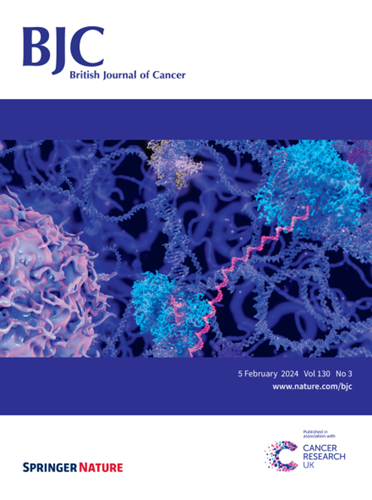亚硝酸钠调控舌鳞癌细胞巨噬细胞模拟,驱动淋巴转移。
IF 6.4
1区 医学
Q1 ONCOLOGY
引用次数: 0
摘要
背景:舌鳞状细胞癌(TSCC)是一种发病机制不明确的恶性口腔癌,有早期淋巴转移的倾向。这导致预后不良,5年生存率低。膳食亚硝酸钠(NaNO2)被认为与包括癌症在内的疾病有关。然而,NaNO2与TSCC之间的直接关系尚未建立。方法:采用体外和体内实验研究NaNO2在TSCC中的作用。采用免疫组织化学和免疫荧光法检测TSCC标本中的蛋白表达。采用RT-qPCR、western blot、RNA-seq、荧光素酶报告基因检测、迁移检测和FACS分析来确定其分子机制。方法的更多细节可以在材料和方法部分找到。结果:本研究的数据显示,NaNO2在指定的实验时间内不会引发舌头的癌变,但会提高TSCC细胞的淋巴转移潜力。在转移到淋巴结的过程中,TSCC细胞中的单核-巨噬细胞标志物上调,而角蛋白标志物下调。具体来说,在nano2诱导的TSCC表型转换后,CD68基因在TSCC细胞中表达高。这些表型变化与直接靶向CD68转录的转录因子循环- amp反应结合蛋白(CREB1)的激活有关。此外,通过基因敲除或特异性抑制剂治疗阻断CREB1活性降低了TSCC细胞的迁移能力并抑制了CD68的表达。结论:我们的研究结果强调了NaNO2通过CREB1-CD68信号通路在TSCC细胞中激活巨噬细胞模仿的作用,从而促进淋巴转移。揭示TSCC淋巴转移的驱动因素,并为改善TSCC患者预后的饮食策略提供新的视角。本文章由计算机程序翻译,如有差异,请以英文原文为准。

Sodium nitrite orchestrates macrophage mimicry of tongue squamous carcinoma cells to drive lymphatic metastasis
Tongue squamous cell carcinoma (TSCC) is a malignant oral cancer with unclear pathogenesis that shows a tendency for early-stage lymphatic metastasis. This results in a poor prognosis, with a low 5-year survival rate. Dietary sodium nitrite (NaNO2) has proposed associations with disease, including cancer. However, a direct relationship between NaNO2 and TSCC has not been established. In vitro and in vivo assays were used to investigate the role of NaNO2 in TSCC. Protein expression in TSCC specimens was detected by immunohistochemistry and immunofluorescence. The molecular mechanism was determined using RT-qPCR, western blot, RNA-seq, luciferase reporter assays, migration assays, and FACS analysis. More detail of methods can be found in the Materials and methods section. The data in this study showed that NaNO2 did not initiate carcinogenesis in the tongue but improved the lymphatic metastatic potential of TSCC cells in the specified experimental period. During metastasis to lymph nodes, monocyte-macrophage markers were upregulated in TSCC cells, whereas keratin markers were downregulated. Specifically, expression of the CD68 gene was high in TSCC cells following NaNO2-induced TSCC phenotypic switching. These phenotypic changes were associated with activation of transcription factor cyclic-AMP response binding protein (CREB1), which directly targets CD68 transcription. Furthermore, blocking CREB1 activity either through gene knockout or specific inhibitor treatment decreased the migration ability of TSCC cells and suppressed CD68 expression. Our findings highlight the role of NaNO2 in enabling macrophage mimicry in TSCC cells through the CREB1-CD68 signaling pathway, which promotes lymphatic metastasis. Shedding light on drivers of lymphatic metastasis in TSCC and providing a new perspective on dietary strategies to improve outcomes of patients with TSCC.
求助全文
通过发布文献求助,成功后即可免费获取论文全文。
去求助
来源期刊

British Journal of Cancer
医学-肿瘤学
CiteScore
15.10
自引率
1.10%
发文量
383
审稿时长
6 months
期刊介绍:
The British Journal of Cancer is one of the most-cited general cancer journals, publishing significant advances in translational and clinical cancer research.It also publishes high-quality reviews and thought-provoking comment on all aspects of cancer prevention,diagnosis and treatment.
 求助内容:
求助内容: 应助结果提醒方式:
应助结果提醒方式:


